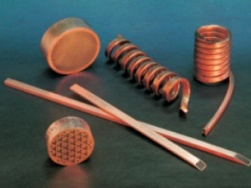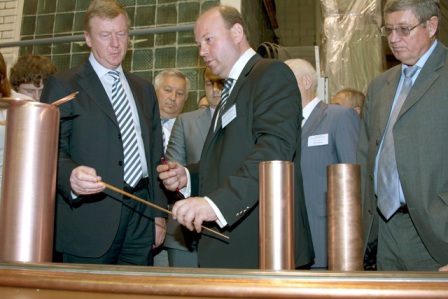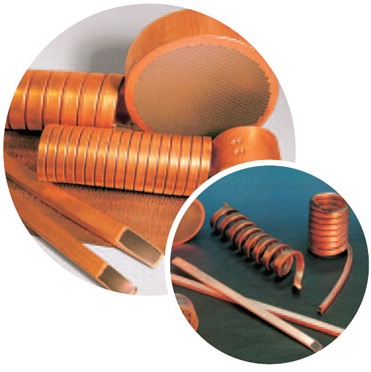Categories: Featured Articles » Interesting electrical news
Number of views: 10005
Comments on the article: 2
Superwires - nanotechnology in the electric power industry
 Specialists of the All-Russian Research Institute of Inorganic Materials named after Academician A.A. Bochvara developed the technology for creating the latest super wires. The essence of the technology is the sequential assembly of bimetallic composite billets with their subsequent deformation. This makes it possible to incorporate tape niobium fibers with a thickness of only 6-10 nm into the matrix of an ordinary copper wire.
Specialists of the All-Russian Research Institute of Inorganic Materials named after Academician A.A. Bochvara developed the technology for creating the latest super wires. The essence of the technology is the sequential assembly of bimetallic composite billets with their subsequent deformation. This makes it possible to incorporate tape niobium fibers with a thickness of only 6-10 nm into the matrix of an ordinary copper wire.
The result is a composite wire with a cross section of 2 by 3 mm, in which up to 400 million of these finest niobium fibers are present. The resulting wire is characterized by an anomalously high mechanical strength, significantly more than 500 MPa, and electrical conductivity at the level of 65-85% of the conductivity of pure copper, which is achieved by a small distance between the fibers, comparable with the average path length of the electrons in the copper matrix.

Super wires are considered to be wires with tensile strength exceeding 400-450 MPa, the electrical conductivity of which is from 40 to 80% of the value of this value of the corresponding pure copper. In the summer of 2012, together with RUSNANO, the Nanoelectro plant was launched in Russia, as part of its industrial activity, the production of such ultra-high-strength nanostructured wires with a planned volume of up to 50 tons per year began.
The project budget amounted to 1.02 billion rubles. A number of foreign companies, including shipbuilding enterprises, have their own interest in acquiring Russian-made super-wires, since new products significantly exceed their existing analogues on the market.

Today, superwires are needed primarily by scientists to create super-powerful electromagnets. Project partners are: CERN, Kurchatov Institute, National Laboratory of High Magnetic Fields, Los Alamos, USA, Rossendorf Research Center, Dresden, Germany, Russian Railways, VNIIKP, ALPHISICA GmbH.
In March 2012, it was in the laboratory of Los Alamos that a world record was set, where an electromagnet based on Russian super wires showed an induction of 100 Tesla, which is 2 million times higher than the magnetic field of the Earth. In addition, industries such as robotics, microelectronics, shipbuilding, aircraft manufacturing and other important high-tech industries are interested in using super wires.
If you compare the new composite material with copper, bronze, brass, then the advantages will become apparent. Pure copper has exceptional electrical conductivity (inferior to silver), but at the same time, the tensile strength of copper is only 220-270 MPa.
The conductivity of bronze is only 17% of the conductivity of pure copper, but the tensile strength of 400-970 MPa. Brass has a tensile strength of 380-880 MPa, but its electrical conductivity is 2 times lower than the electrical conductivity of copper.
As for the new material of superconductors, the tensile strength here reaches 1200 MPa, and the electrical conductivity is only slightly inferior to the electrical conductivity of copper.
So superconductors with high mechanical characteristics are simply indispensable for high-field impulse magnets and magneto-impulse inductors, for aviation and space technology, for the navy and defense industry, as well as contact wires for high-speed trains.
The strength of the wires is also important simply in our climatic conditions, where wet snow and a squally wind often leads to power line breaks, which is fraught with blackouts in settlements, and lengthy repair work. Over time, nanostructured wires will almost certainly help solve this problem.
See also at bgv.electricianexp.com
:

